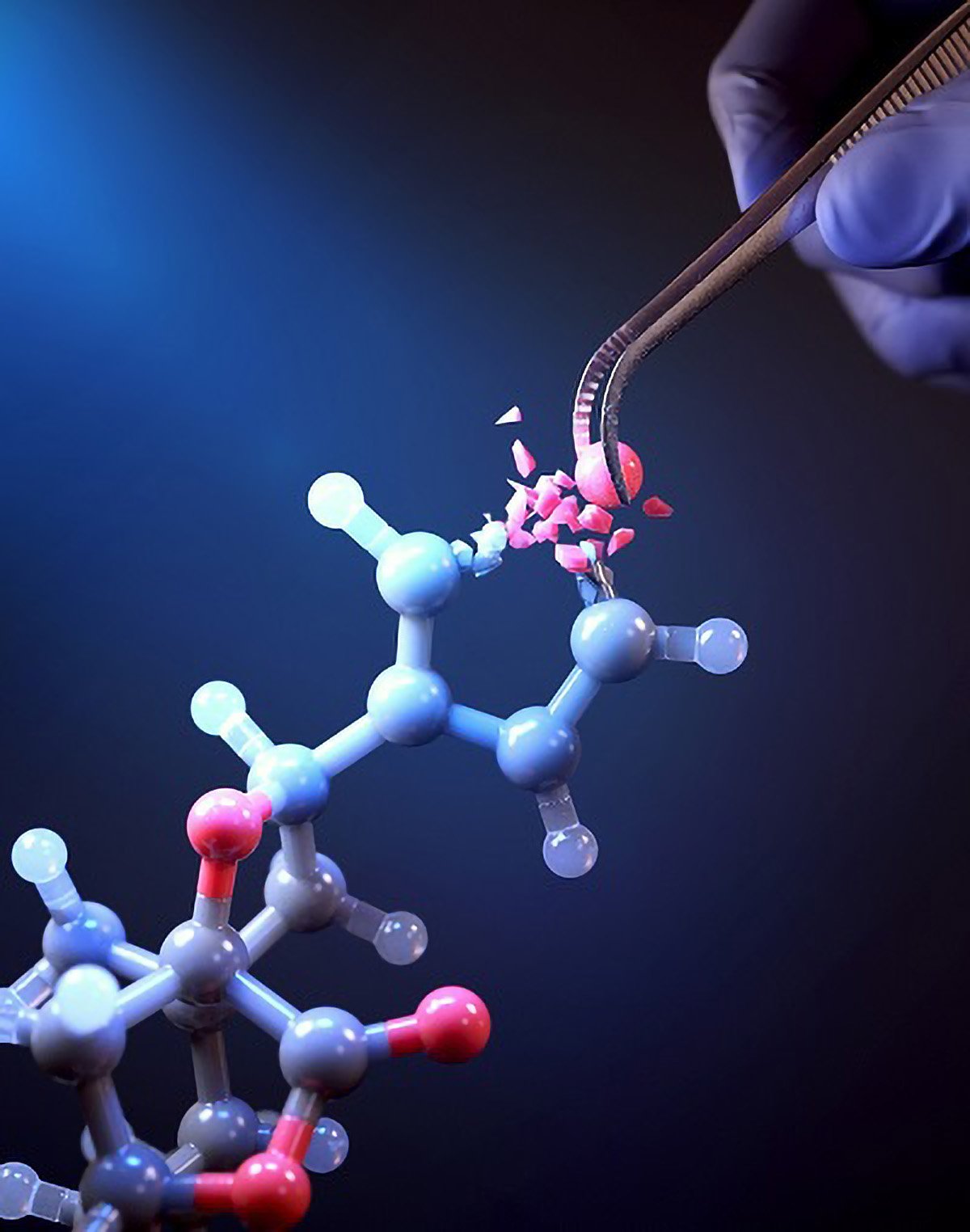博文
革命性的药物发现:科学家开发了世界上第一个单原子编辑技术
||
革命性的药物发现:科学家开发了世界上第一个单原子编辑技术
诸平
据韩国科学技术院{The Korea Advanced Institute of Science and Technology (KAIST), Daejeon, Republic of Korea}2024年11月26日提供的消息,革命性的药物发现:科学家开发了世界上第一个单原子编辑技术(Revolutionizing Drug Discovery: Scientists Develop World’s First Single-Atom Editing Technology)。
韩国科学技术院(KAIST)的研究人员开发出了利用光动力分子剪刀将药物化合物中的氧原子转化为氮原子的开创性单原子编辑技术,从而简化了药物开发过程,提高了疗效。
在开拓性药物开发领域,一项突破性的新技术能够精确快速地编辑对药物功效至关重要的关键原子,这被誉为一项变革和梦想的创新,彻底改变了发现潜在候选药物的过程。KAIST的研究人员在世界上首次成功开发出了将药物功效最大化的单原子编辑技术。
2024年10月8日,韩国科学技术院(KAIST)Kwang-Hyung Lee校长代表该院宣布,化学系 Yoonsu Park教授(Professor Yoonsu Park)研究小组成功开发出了将呋喃化合物中的氧原子转换为氮原子,并直接转化为药物中广泛使用的吡咯骨架(pyrrole frameworks)的技术。这项研究2024年10月3日已经在《科学》(Science)杂志网站发表——Donghyeon Kim, Jaehyun You, Da Hye Lee, Hojin Hong, Dongwook Kim, Yoonsu Park. Photocatalytic furan-to-pyrrole conversion. Science, 2024, 386(6717): 99-105. DOI: 10.1126/science.adq6245. Epub: 3 October 2024. 参与此项研究的除了来自韩国科学技术院化学系{Department of Chemistry, Korea Advanced Institute of Science and Technology (KAIST), Daejeon, Republic of Korea}的研究人员之外,还有来自韩国基础科学研究所催化烃功能化中心(Center for Catalytic Hydrocarbon Functionalizations, Institute for Basic Science, Daejeon, Republic of Korea)的研究人员。。
许多药物具有复杂的化学结构,但它们的疗效往往由一个关键原子决定。像氧和氮这样的原子在增强这些药物的药理作用,特别是对病毒的作用方面起着核心作用。
这种将特定原子引入药物分子会显著影响其功效的现象被称为单原子效应(Single Atom Effect)。在尖端药物开发中,发现使药物功效最大化的原子是关键。
传统单原子编辑方法的挑战(Challenges in Traditional Approaches to Single-Atom Editing)
然而,评估单原子效应传统上需要多步骤,昂贵的合成过程,因为很难有选择地编辑含有氧或氮的稳定环结构中的单个原子。
Yoonsu Park教授研究小组引进了利用光能的光催化剂,克服了这一难题。他们开发了一种光催化剂,它可以像分子剪刀一样自由地切割和附着五元环,这是世界上第一次在室温和常压下实现单原子编辑。研究小组发现了一种新的反应机制,在这种机制中,受激发的分子剪刀通过单电子氧化从呋喃中去除氧,然后依次添加一个氮原子。
该研究的共同第一作者、KAIST化学系综合硕、博研究生Donghyeon Kim和Jaehyun You解释说:“该技术利用光能代替恶劣条件,具有很高的通用性。”
他们进一步指出,该技术可以进行选择性编辑,甚至可以应用于复杂的天然产品或药物。主导该研究的Yoonsu Park教授表示:“此次突破可以选择性地编辑5元有机环结构,将为制药领域的核心挑战——构建候选药物库打开新的大门。我希望这项基础技术将被用于彻底改变药物开发过程。”
此研究得到了韩国国立创新研究财团(National Research Foundation of Korea’s Creative Research Program)、KAIST跨代协作实验室项目(Cross-Generation Collaborative Lab Project at KAIST)、浦项制铁TJ Park财团的浦项制铁科学奖学金(POSCO Science Fellowship of the POSCO TJ Park Foundation)的支持。
上述介绍,仅供参考。欲了解更多信息,敬请注意浏览原文或者相关报道。KAIST pioneers atomic editing technology for drug discovery
New paradigm of drug discovery with world's first atomic editing?
KAIST changes the paradigm of drug discovery with world's first atomic editing
Chemists have recently introduced a flurry of editing methods to excise individual atoms from molecular frameworks and, in some cases, replace them with alternate functionality. Kim et al. further this trend by executing an O for N swap, specifically, replacing the O in furan rings with the N in a primary amine, thereby generating pyrroles (see the Perspective by Plachinski and Yoon). This method relies on photoredox catalysis to oxidize the furans and render them more susceptible to the amine addition, and it is applicable to a wide variety of pharmaceutically relevant scaffolds. —Jake S. Yeston
The identity of a heteroatom within an aromatic ring influences the chemical properties of that heterocyclic compound. Systematically evaluating the effect of a single atom, however, poses synthetic challenges, primarily as a result of thermodynamic mismatches in atomic exchange processes. We present a photocatalytic strategy that swaps an oxygen atom of furan with a nitrogen group, directly converting the furan into a pyrrole analog in a single intermolecular reaction. High compatibility was observed with various furan derivatives and nitrogen nucleophiles commonly used in drug discovery, and the late-stage functionalization furnished otherwise difficult-to-access pyrroles from naturally occurring furans of high molecular complexity. Mechanistic analysis suggested that polarity inversion through single electron transfer initiates the redox-neutral atom exchange processes at room temperature.
https://blog.sciencenet.cn/blog-212210-1461990.html
上一篇:科学家解开自私的B染色体之谜
下一篇:新型传感器为诊断铺平了道路
